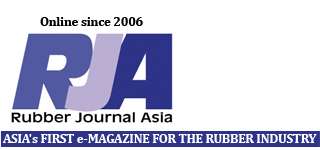 Recognising that its business related to colourants for dipped latex applications is still in an infancy stage, Clariant Malaysia’s Pigments Business Unit has been actively promoting it the past year, said Philip Martin Adams Marketing & Sales Director, Plastics & Special Applications Business, Asia/Pacific. ”For various reasons, we have not been focusing on the latex sector in Malaysia, but we are now putting together a business model to support this,” said Adams, speaking to RJA at the recently concluded 6th International Rubber Glove Conference & Exhibition in Malaysia.
Recognising that its business related to colourants for dipped latex applications is still in an infancy stage, Clariant Malaysia’s Pigments Business Unit has been actively promoting it the past year, said Philip Martin Adams Marketing & Sales Director, Plastics & Special Applications Business, Asia/Pacific. ”For various reasons, we have not been focusing on the latex sector in Malaysia, but we are now putting together a business model to support this,” said Adams, speaking to RJA at the recently concluded 6th International Rubber Glove Conference & Exhibition in Malaysia.
The Swiss firm has comprehensive set-ups in the region for its pigments/pigment dispersions business. In China, where it operates through a joint venture, it has significantly expanded (doubled) its output (to 7,000 tonnes/year), said Adams, adding that the facility was relocated from Tianjin to Shanghai to support growing domestic and export demands.
In Indonesia, where the business is smaller, it is looking at doubling its capacity. “This is one of our expansion plans over the next two years,” he added.
In Malaysia, the firm set up a technical laboratory for plastic pigments in Shah Alam several years ago. In fact, Adams said the company is in the process of expanding the laboratory and relocating it into the main building.
The focus of the firm is now on building and expanding its services to the latex sector, with an eye on the healthcare/medical sector. Products from Clariant’s Colanyl, Flexonyl, Cosmenyl and Hostafine pigment preparation ranges cater to applications in natural and synthetic rubber systems for colouring gloves, balloons and other rubber items, including testing for bleed-fastness.
“Clariant’s pigment preparations are based on both organic and inorganic pigments, which are dispersed using Clariant’s own technology,” explained Adams, adding that the products meet all the relevant US and EU regulatory approvals.
For example, Clariant’s colourants comply with requirements for heavy metal trace impurities and the content of primary aromatic amines as covered by EU toy regulations EN 71-3 and EN 71-9, as well as the Community of Europe Resolution AP (89)1. Individual basic pigments in special pigment preparations also comply with US regulation for rubber articles intended for repeated use in food contact applications FDA 21CFR 178.3297.
While the regulatory approvals are not all that stringent in the Asian rubber market, Adams expects similar enforcements to follow. “Emerging economies are moving towards better healthcare and the regulatory procedures will follow soon. We are ready for this as we offer this service to our customers to meet these requirements.”
When asked of the future outlook for the segment, Adams said, “We’re relatively new in the market so we are looking for significant growth.” (PRA)
